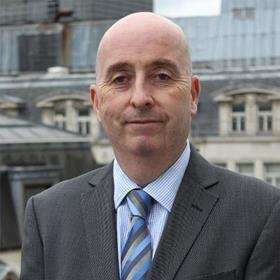Hillary Clinton has called for insurance to be reformed in a speech at the UN’s climate conference, but her requests are not so simple
By Jon Guy

As COP28 continued in Dubai this week (4 December 2023), the insurance industry was on both sides of the fence concerning its role in the fight against climate change.
One of the biggest names in US politics, US secretary of state Hillary Clinton, has called for insurance to be reformed, accusing the sector of walking away from those who need cover most – but can least afford it.
She called for insurance reform and cited the unavailability of coverage for certain populations as the growing impact of climate change becomes increasingly difficult to ignore.
“We need to rethink the insurance industry,” she said.
“Insurance companies are pulling out of so many places. They’re not insuring homes. They’re not insuring businesses.”
The reform call continued as Clinton explained: “People in the United States, Europe – they’re going to wake up and say, ‘What do you mean, I can’t get insurance?’”
Two sides of a coin
David Howden, founder and chief executive of the eponymous broker, however, was quick to provide a very different take to Secretary Clinton.
Read: Briefing – Insurers likely to COP the bill for climate resilience
Read: Howden launches climate parametrics practice
Explore more ESG-related content here or discover other news analysis here
“For some reason, there seems to be a belief that the climate risks for vulnerable countries in the global South are uninsurable,” he told delegates in Dubai.
“The problem isn’t that they’re uninsurable, it’s that there has been nobody to pay the premium at the scale required.”
Howden believes the $100bn Loss and Damage Fund (L&D Fund) that has been set up to support those developing nations hardest hit by climate change could provide the finance to pay a premium that would deliver certainty should disaster strike.
Ther broker conducted research with the University of Cambridge in an effort to quantify just how much risk climate change poses.
The research found that the smallest, most vulnerable countries currently risk losing over 100% of their gross domestic product (GDP) from extreme climate shocks.
However, Howden said: “We have worked out how we can cap the loss at 10% of their GDP and for less than you’d think. We found that $1bn – less than 1% of the targeted $100bn billon L&D fund – can secure around $75bn of protection.”
A lofty ambition – and spoken like a true broker, who sees opportunity in every risk challenge.
What is missing from this plan, however, is any public statement from the underwriters that would have to assume the risks a $1bn premium would seek to mitigate.
While (re)insurers have scaled back their exposure to natural catastrophe risks, wholesale reform is wide of the mark.
Insurers are like any commercial organisation – they will sell you the product you require. Nothing is truly uninsurable, it is just a question of whether you are willing to pay the price.
There are some who say the funds in the L&D fund should be used for longer term investment – rather than premium financing – and that insurers are there to provide short term liquidity.
The debate is likely to continue for some time.
Hosted by comedian and actor Tom Allen, 34 Gold, 23 Silver and 22 Bronze awards were handed out across an amazing 34 categories recognising brilliance and innovation right across the breadth of UK general insurance.
























































No comments yet